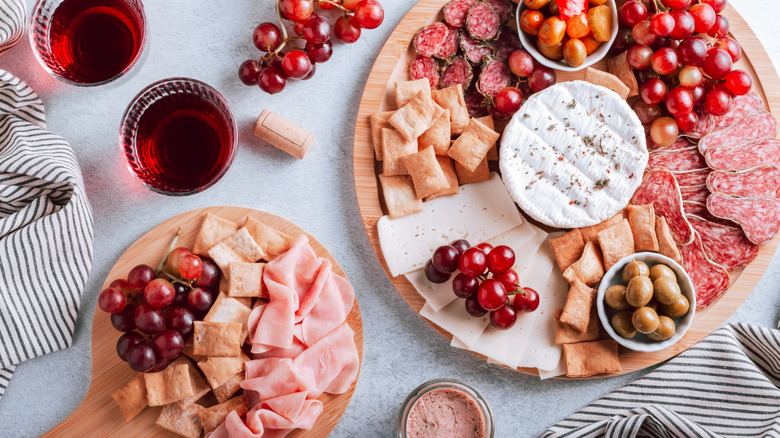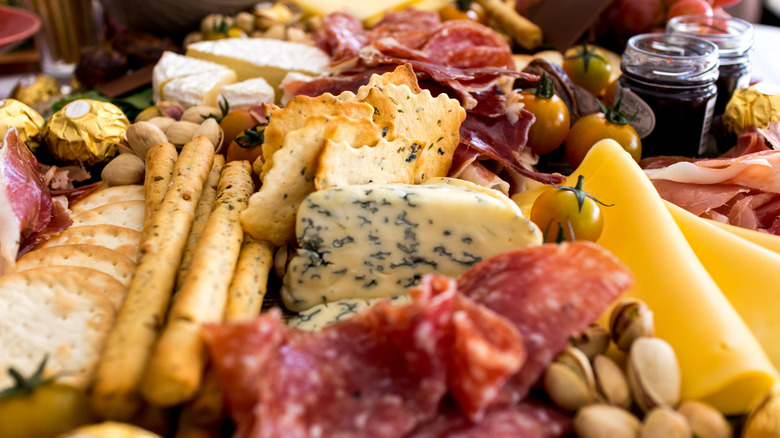The Real Reason Charcuterie Boards Can Be So Expensive
No matter if you're at a wedding, holiday get-together, or dinner party, chances are high that there's plenty of delicious food to be had. Often, food is at the center of events and social gatherings, whether it's the buttercream cake at a birthday celebration or the passed hors d'oeuvres at cocktail hour. While the type of eats varies based on the occasion, one of the most popular dishes served at parties is the charcuterie board.
The board itself can be a work of art — made of crystal, marble, wood, or stone — but it's what's on top of the board that's the real star of the show. There's the meat, from salami to prosciutto to summer sausage. Then there's the cheese, from provolone to Swiss to aged gouda. And then there's the extras, from grapes to cornichons to crackers. But for as delicious as charcuterie boards are, they're also quite expensive. What makes them so pricey? Here's what you may not have known.
Charcuterie costs a lot of money and time to make
The reason why charcuterie boards are so expensive is because of how expensive the ingredients are — prosciutto, for instance, can cost up to $36 per pound. However, the reason why those ingredients cost so much is because of how extensive the production process is. According to Eat Cured Meat, charcuterie — like salami, pancetta, or lardo — takes a long time to cure and smoke. Not only that, but the higher the quality of the meat and the better the animal welfare, the more pricey the charcuterie ends up being.
The Travel adds that the longer shelf life of these cured meats also contributes to the higher price point. The production process isn't just time-consuming, it's also very intricate. "Curing isn't simple," Home Kitchen Talk explains. "There are various factors one has to keep in mind to produce high-quality meat, such as pH acid level monitoring, drying environment, growth of good mold, etc."

